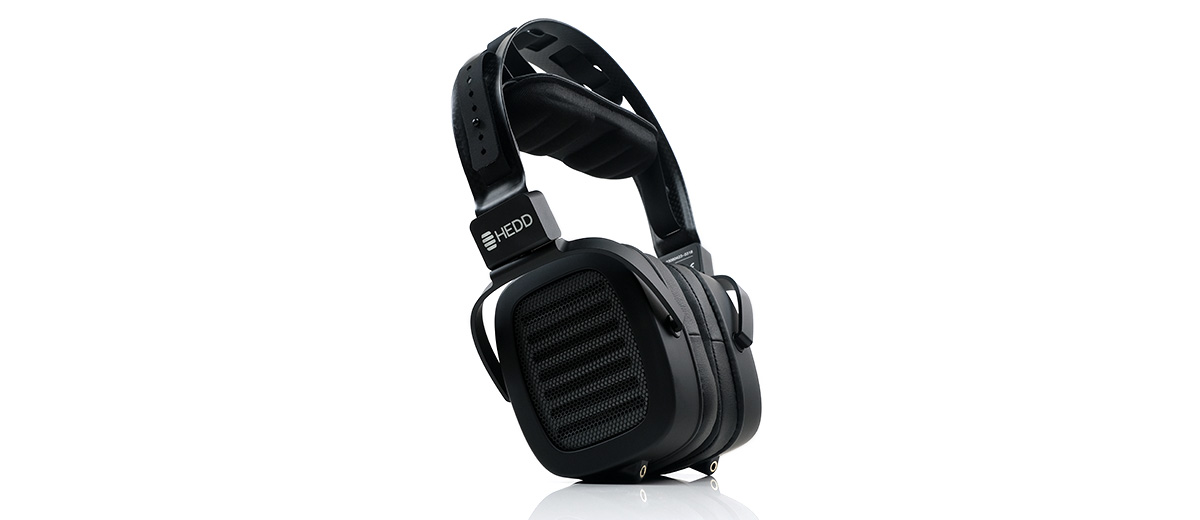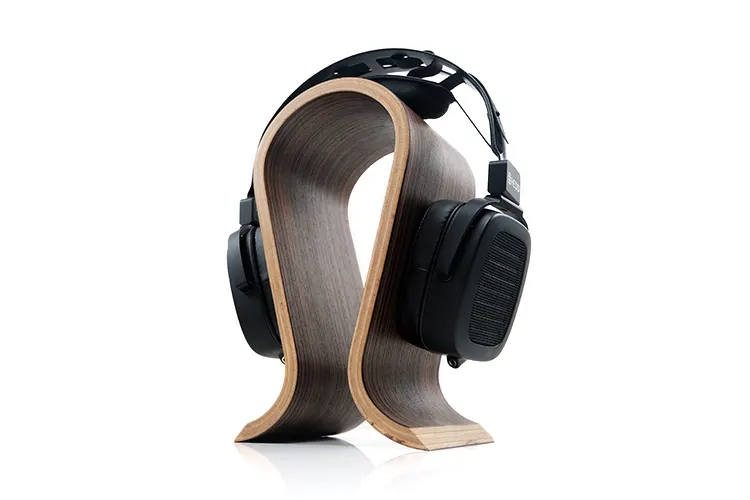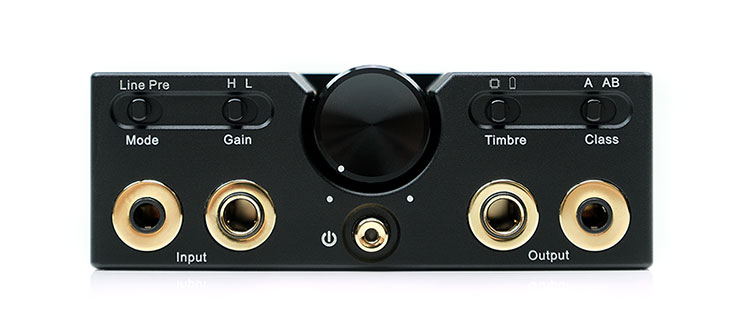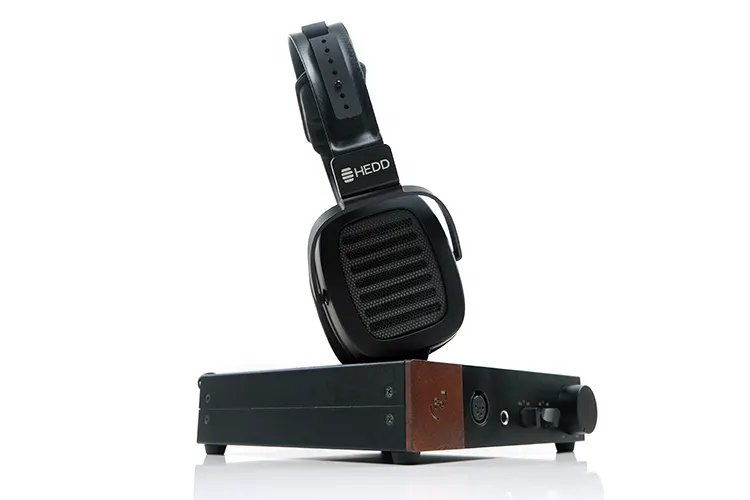Sound Impressions
The following sound impressions were created using a mix of the Ferrum OOR and HIFIMAN’s Prelude solid-state amplifier combined with the Cayin Mini-CD MKII and the HIFIMAN Serenade as our main decoders.
Summary
Save for the overlapping technical quality of the two AMT drivers in terms of speed and resolution, the HEDDphone Two is a completely different-sounding headphone to the original version.
Instead of being tall and spacious sounding, we have a flatter, more intimate, and muscular presentation. Gone is the ethereal lighter note quality of the original’s performance replaced instead by a denser and smoother performance.
I had remarked in the original review that the HEDDphone had an interesting mix of electrostatic speed and a little of the improved body you tend to find from planar drivers.
I would argue that the HEDDphone Two has not only retained the speed but also doubled down on the body. Particularly through the mids which sound less like an evolution of what has come before and more like an entirely new tuning philosophy.
You still will not find the HEDDphone Two imbued with huge amounts of sub-bass rumble. I suspect that may well be a limitation of using an AMT driver. However, beyond that and particularly through the lower-mids the HEDDphone Two is the more robust sounding.
This is ironic because I described the original’s leaner lower mids as less than ideal for heavy-hitting rhythm guitar chords. Now, the HEDDphone Two sounds almost ideal to not only deliver the required rapid speed and thrash metal guitar plucks but with much better body and more pleasing warmth.
The ethereal highs are gone on HEDDphone Two. There is less of a push around 6-8k and less energy there which might rob this version of some perceived air and sparkle. However, the net gain is a much richer vocal coloration that I find more engaging compared to the original.
Frequency Response
As with the original, the HEDDphone Two is not going to deliver copious amounts of sub-bass presence. There is a noticeable drop below what some would consider a reference target curve around 80Hz down to 20Hz so for those who want a heady set of lows this may not be the headphone for you.
However, beyond, and right up to 2K the HEDDphone Two has a more consistent and elevated frequency response over the older tuning. It sounds a lot more fulsome as a result bringing a lot of lower register instruments to the fore that lacked a bit of substance on the original.
So, despite the lack of presence at the very end of the spectrum, the HEDDphone Two delivers a surprisingly visceral and ‘big-sounding’ note, especially for bass and rhythm guitar which is where it excels.
The HEDDphone Two is more relaxed in its imaging across the 2-5k range and below neutral in terms of a target curve for this region. That is not to say it is dipped, the 1-3k region is the most forward aspect of the tuning and you will hear that with the vocal imaging. Rather, it’s just not overdone and not quite as pronounced as the original’s tuning.
Neither headphone is what you would consider overly bright or peaky save for a mild bump on the original around 10k. The lower treble on the HEDDphone Two does seem more elevated from 5-7k with the original opting instead for a stronger 7-10k range.
Hence, the ethereal sparkle from the original is generally reflected in its lighter timbre and brighter tone through the upper mids percussion and some vocal timbre.
Timbre
Gosh, such a sea change here that covering every change here might be an impossible task.
Gone is the neutral to slightly bright and lighter coloration of the original. Suffice it to say, the HEDDphone Two is a big changeup, going for something a lot warmer and smoother.
However, this is also not a syrupy congested sound. Especially so with high-energy solid-state amplifiers such as the OOR and the dCS Lina; two amplifiers that chisel out some incredible clarity and resolution from the HEDDphone Two.
Rather, it comes with more pleasing levels of body giving it a far more natural sound quality and some believable weight to chugging guitar chords and bass plucks.
Surprisingly, despite the lack of sub-bass presence, kick drums are very clear and ‘broad sounding’ converting a very credible perception of size and power which was something I didn’t expect.
Are they quite as well defined as something like the similarly priced DCA E3 can achieve? Perhaps not, the weaker sub-bass fundamental doesn’t quite stretch the note deep enough in a similar manner to the E3 but some might see it as a fair trade-off for their immediacy and punch.
Vocals is where I think the HEDDphone Two will win a lot of listeners over. Vocal notes offer a richer texture compared to the original which could sometimes suffer a bit from upper-order dissonance when higher pitching instrument notes got a bit too busy.
Going slightly below the ideal target curve for vocal imaging has been a thing now in the high-end IEM market. I get why HEDD might go with this as it prevents fatigue and gives you a generally more relaxed performance without any loss of presence.
Staging & Dynamics
What you take away from the HEDDphone Two staging properties might depend on what you are looking for in a headphone in general.
It can sound a little blunted on both ends of the spectrum, more so on the sub-bass performance which tails off a bit below 80Hz, and for those uses to the sparkle and roominess of the new E3 or the HIFIMAN Arya Stealth, it might seem more attenuated or comparatively darker in the highs.
However, the flat to slightly elevated mid-bass to midrange makes it a quality performer for instrumental presence in general.
The original HEDDphone sounded more stretched staging-wise but it lacked the gravitas of the HEDDphone Two’s mids and this is exactly where your attention will be for the majority of your listening experience.
The staging can be deceptive though in terms of width. Certain amplifiers can bring a surprisingly wide stereo field to the HEDDphone Two’s performance.
I was all set to call this a rounded and intimate presentation with the Ferrum OOR until I switched to the Cayin HA-300MK2 which offered a far wider and more holographic sound.
Clarity is important in the HEDDphone Two soundstage, or at least ensuring you achieve it. The more intimate positioning means imaging precision and instrumental separation can dive if you feed it a soft or wooly-sounding amp and source.
This driver has some serious chops with it comes to speed and resolution and it does seem to favor a high-energy clean-sounding solid-state amp to achieve that.
Synergy
Efficiency & Sensitivity
Not much has changed since the original HEDDphone 42Ω and 87dB /mW spec sheet. The HEDDphone Two as a similar 41Ω load but is just a little more efficient at 89 dB /mW SPL.
However, it’s still a fairly demanding headphone sensitivity-wise and will need a decent amplifier to drive it to its full potential much like the original.
It is certainly a lot less sensitive than the Audeze MM-500, a planar headphone that many feel is a close competitor in terms of its target audience.
In my testing, I found it similar in requirements to the Dan Clark Audio E3 which is rated at -90 dB/mW thus amplifiers that could drive the E3 had no such issue with the HEDDphone Two.
That included solid-state desktop amplifiers such as the HIFIMAN Prelude, and Ferrum’s OOR, as well as big tube rigs such as the Cayin HA-300MK2 and the Feliks Audio Envy.
That is not to say smaller more compact or portable devices should not be considered in terms of driving capability. After all, HEDD Audio has included a 4.4mm termination as stock on one of the cables.
Portable Pairings
In terms of what portable device is worth considering for the HEDDphone Two, well that’s a different matter entirely.
I would recommend anything around 800mW- 1W into 32Ω. Anything higher, particularly with a 40-50Ω load, will be more noticeable in terms of improved headroom and dynamic range.
For example, the Cayin N8ii‘s P+ mode balanced into the HEDDphone TWO will give you around 500mW of output power at 41Ω. It can sound a little reserved compared to something like the stronger Cayin C9 using the N8ii line-out.
The C9 has around 1.7W to 1.8W for the same load and you can hear that in the improved depth and solidity of the HEDDphone Two lows. More so with the Cayin N7 pre-out pairing from the C9 which was probably the best portable pairing tested during this review process.
One additional note is the operational mode from both the N8ii and the C9. The HEDDphone Two does seem to prefer the mode with a bit of gusto or energy about it.
In this instance, the more ‘driven-sounding’ and cleaner Class AB mode was preferred over the smoother and more relaxed Class A for both of these portable pairings.
If budget is a concern, then the FiiO Q7 and the Shanling H7 are also fairly capable of driving the HEDDphone Two. Both do quite well with the HEDDphone Two on a high gain setting with the Q7 able to go one step further with up to 2W of output power with its DC power supply.
I prefer the H7 presentation despite it having comparatively less power at around 900mW compared to the Q7’s 1W, (41Ω load). The THX-powered Q7 sounded ‘steelier’, teasing out more vocal sibilance in brighter recordings compared to the smoother Class AB H7.
Desktop Pairings
I tested 5 amplifiers both solid-state and tube with plenty of power to drive the HEDDphone Two and came away with a preference for both solid-state and clarity for most rock and EDM and a swing more to warmer/tube amplifiers for vocal performances.
At the top of the pile was the dCS Lina stack which gave me proof positive that the HEDDphone Two really can dig out microdetail to a very fine level.
The Lina stack, which includes the Clock, Network DAC, and Amplifier also gave me the most impressive level of clarity which can make a serious difference when you are firing out fast-paced thrash metal which can sound like a blur on less resolving amps, and DACs.
It was that same reason that I would pick the Ferrum OOR over the HIFIMAN Prelude unless the Prelude is being fed a very clean and open-sounding DAC.
With the Serenade DAC behind it, the Prelude was beautiful sounding for the lower-mid warmth and weight. However, it wasn’t as revealing in the HEDDphone Two mids compared to the Holo Audio DAC/Prelude combo or the OOR when fed some well-produced CDs from the humble Cayin Mini-CD MKII’s Sabre DAC.
That being said, if you want vocal detail and a better emotional connection to more relaxed recordings the Prelude pairing does produce a more natural sound than the OOR combo.
The same could be said for the two tested tube amplifiers. The Feliks Audio Envy/HEDDphone Two produced excellent depth and a smooth center-weighted vocal image.
However, the HA-300MK2 produced some wonderful staging width with the HEDDphone Two. If you want to hear how well this headphone can image nuanced detail at extreme ends of the stereo field this is an excellent combination.




